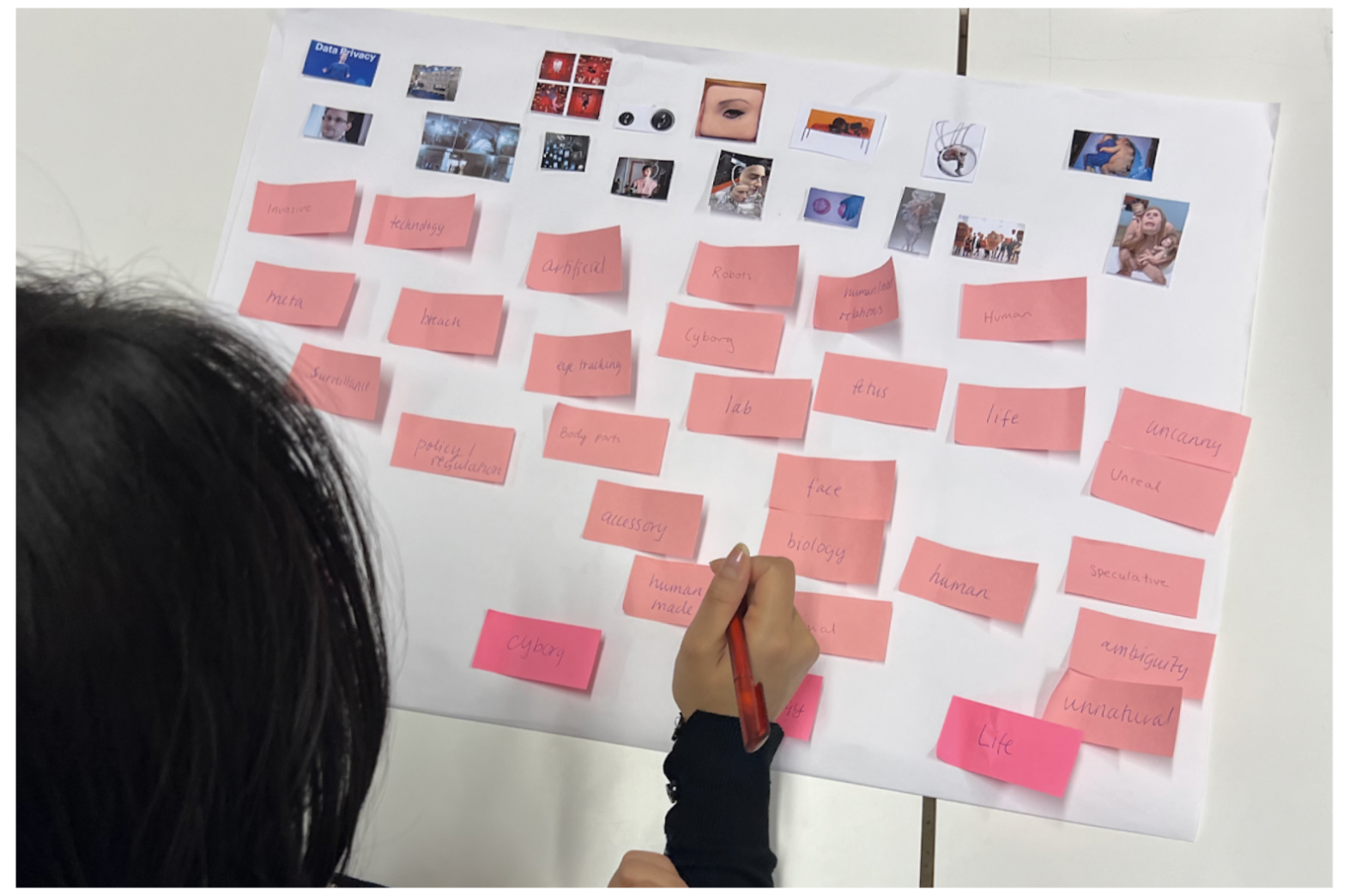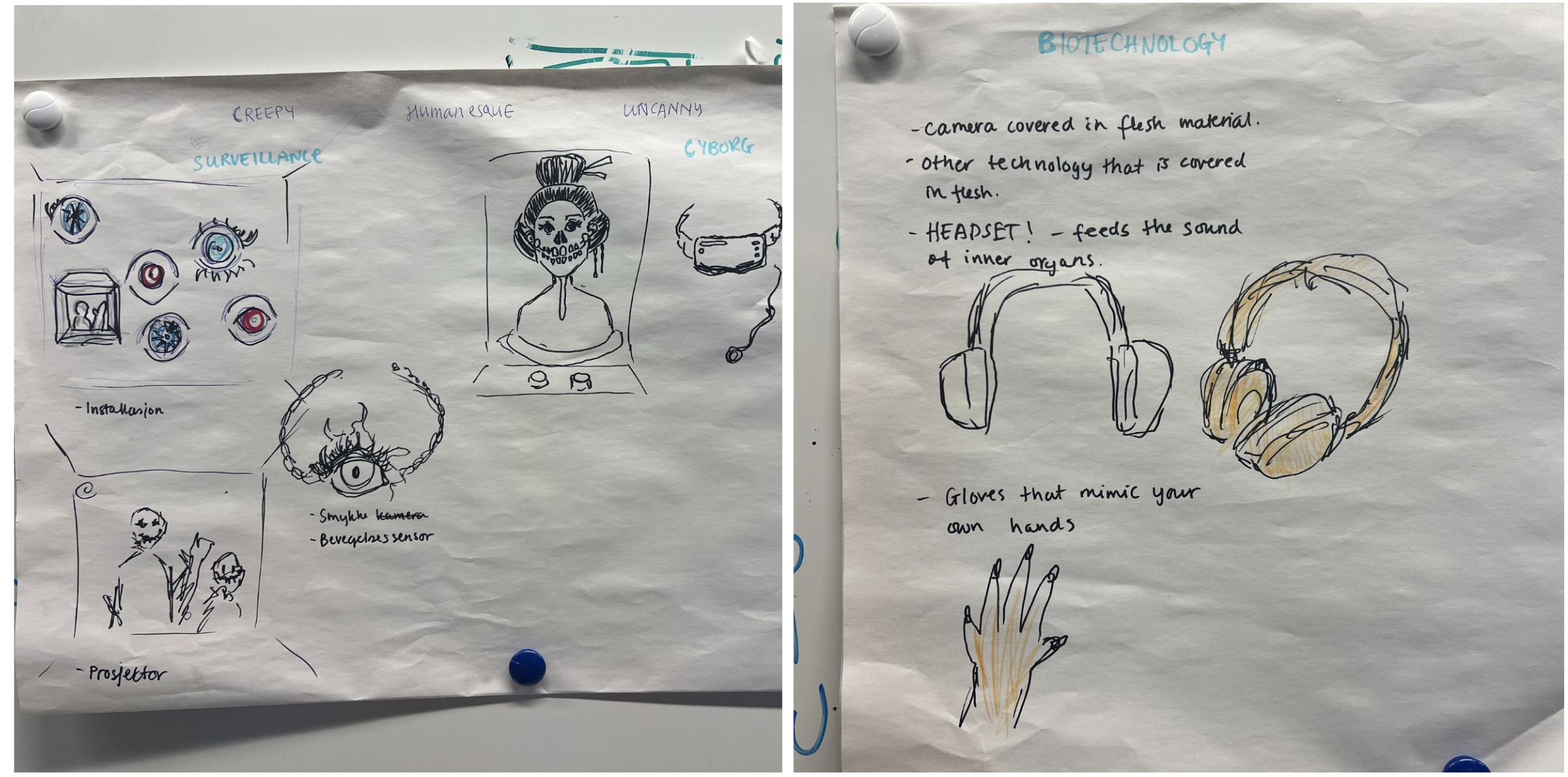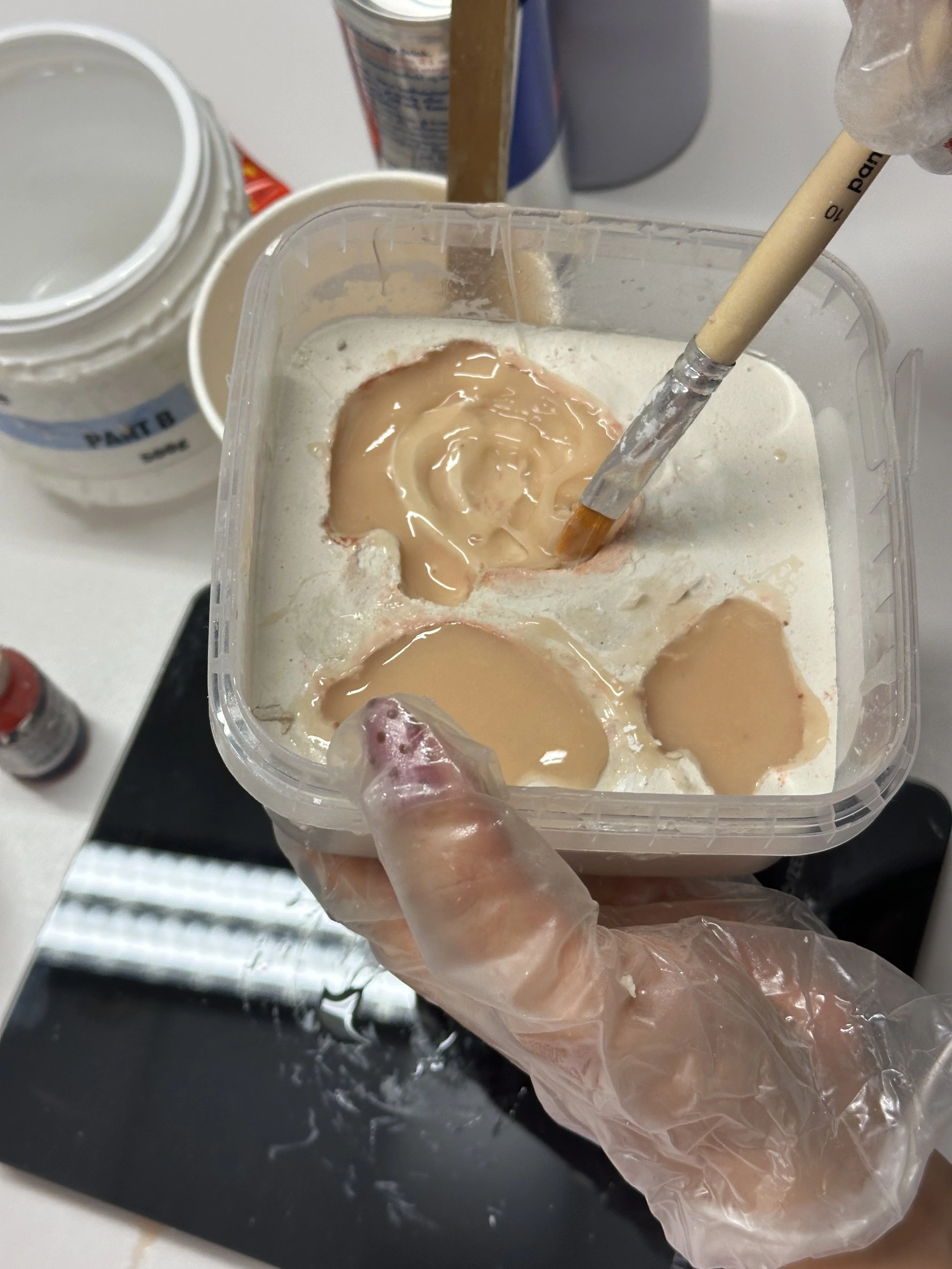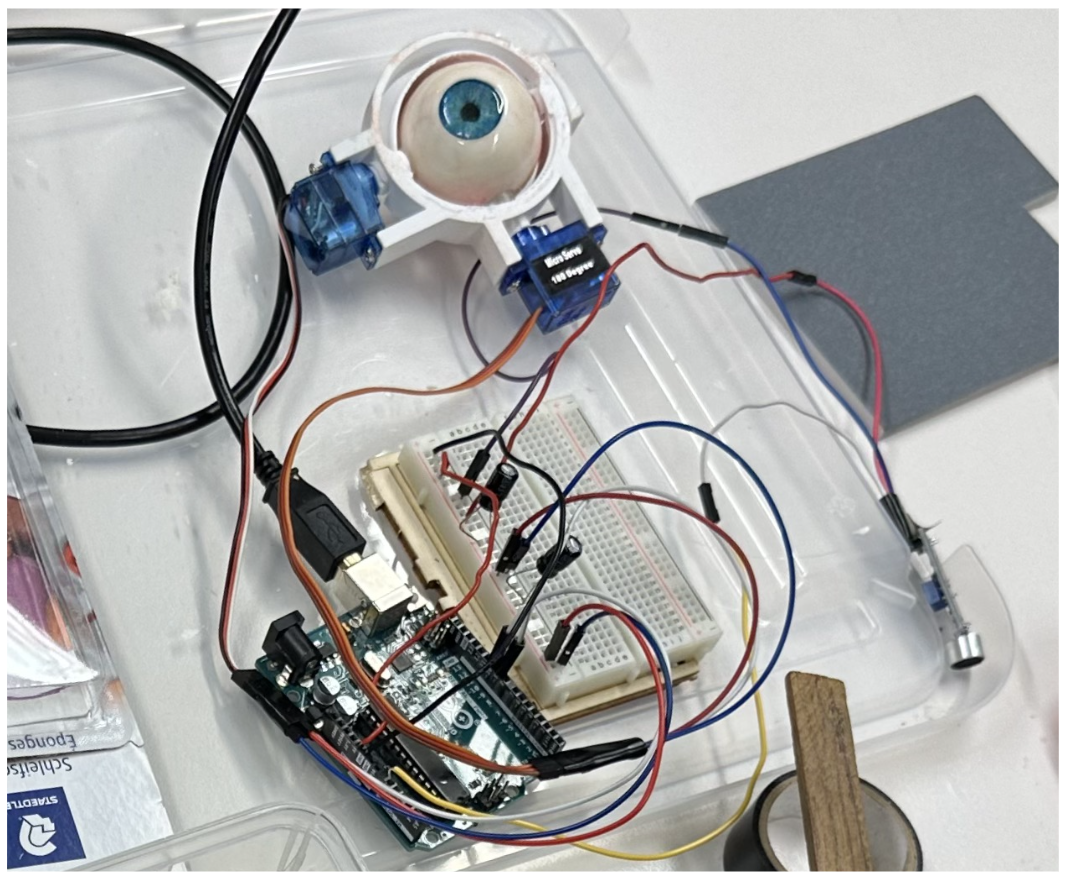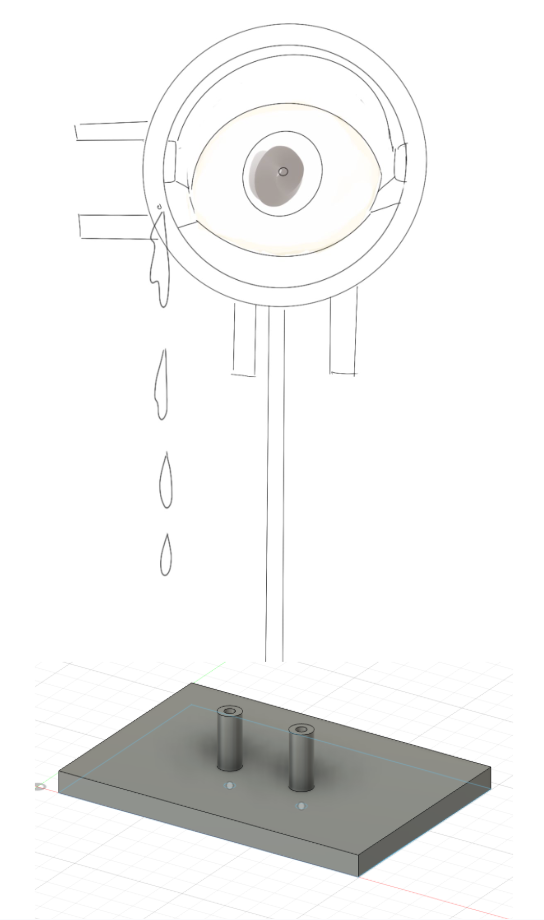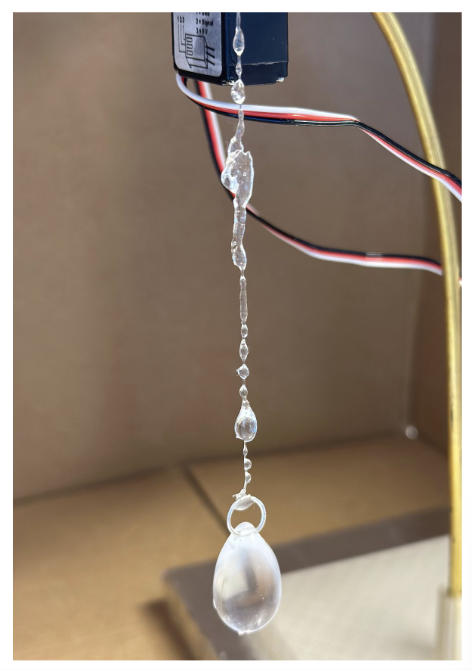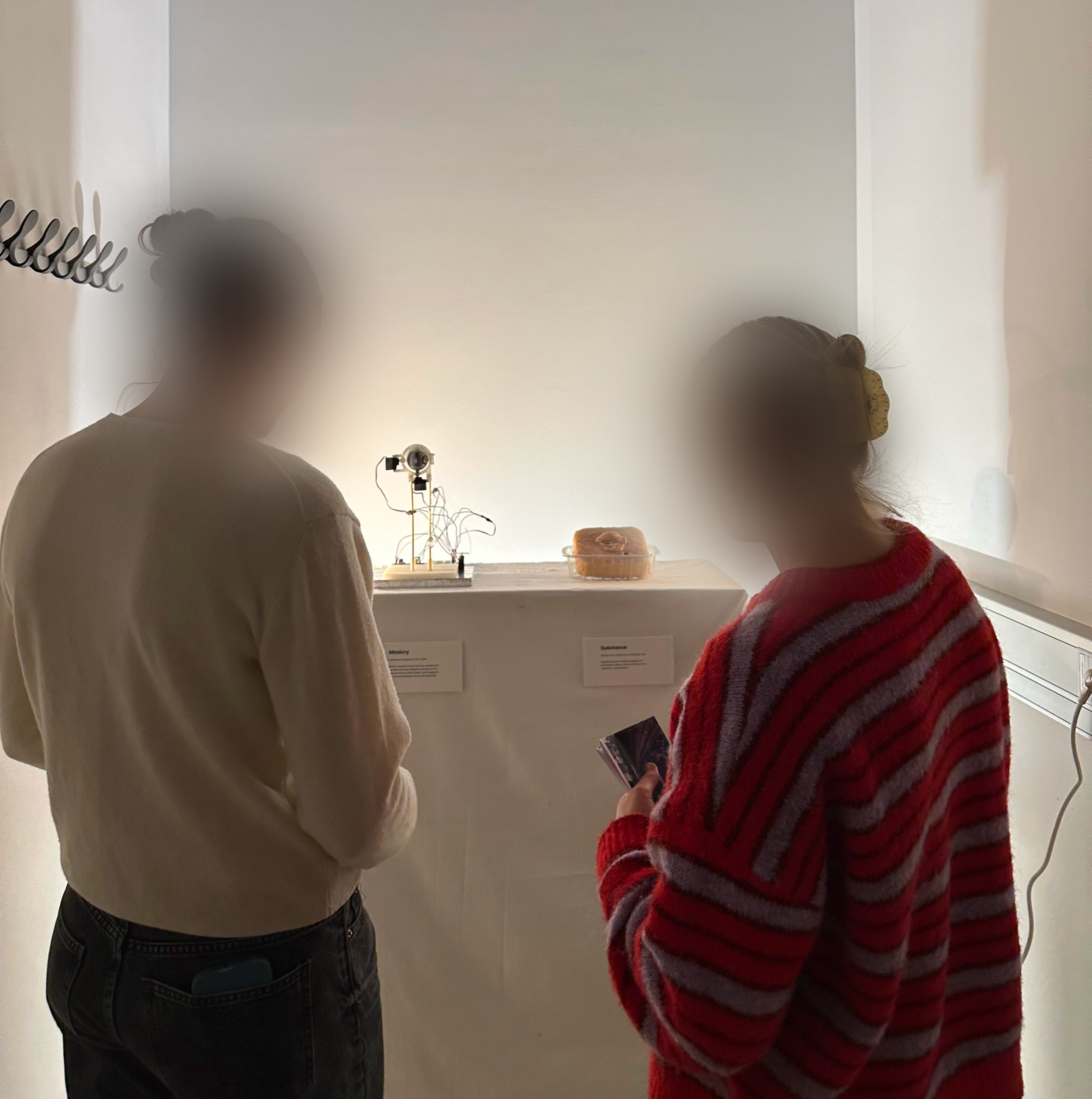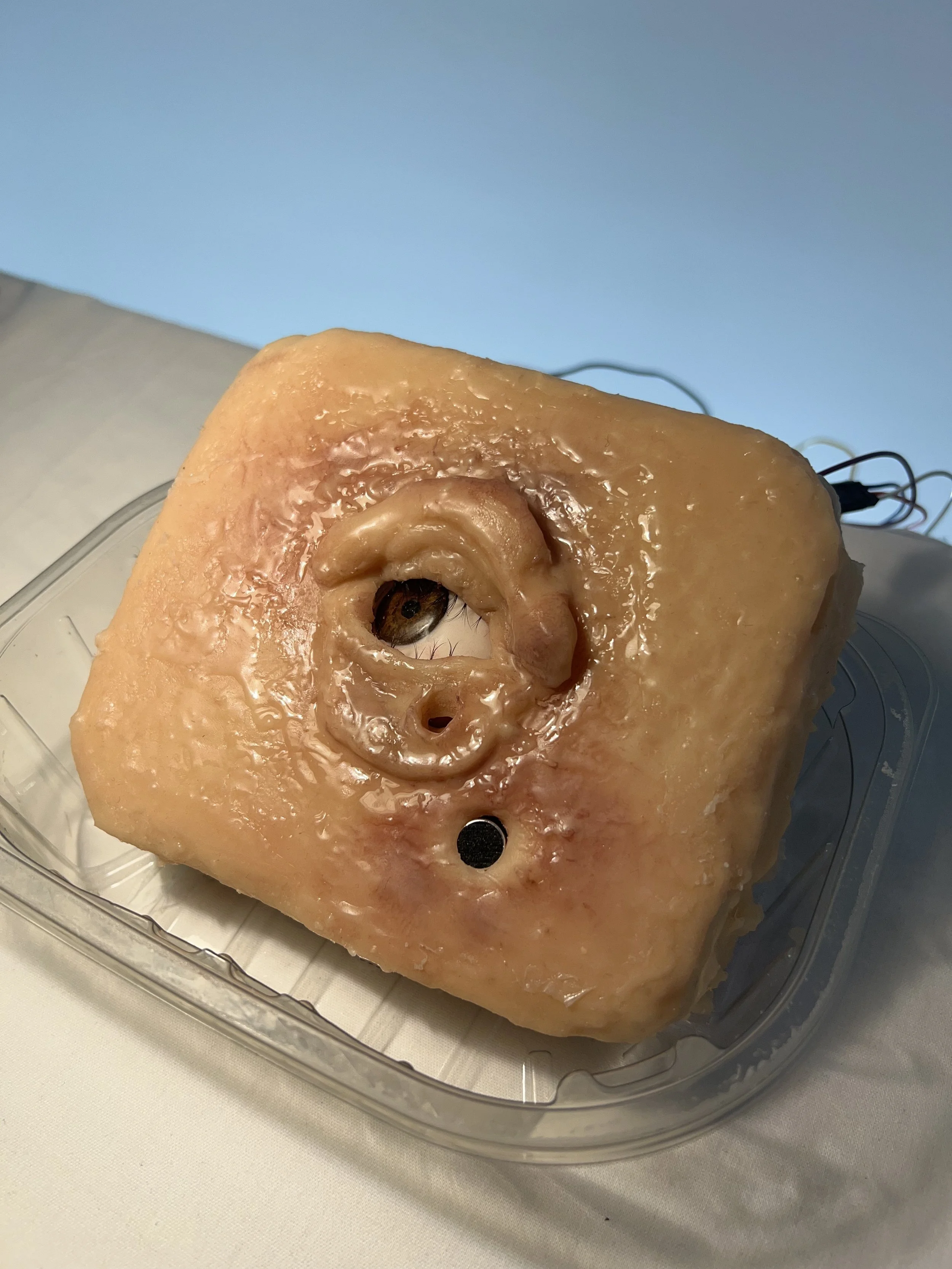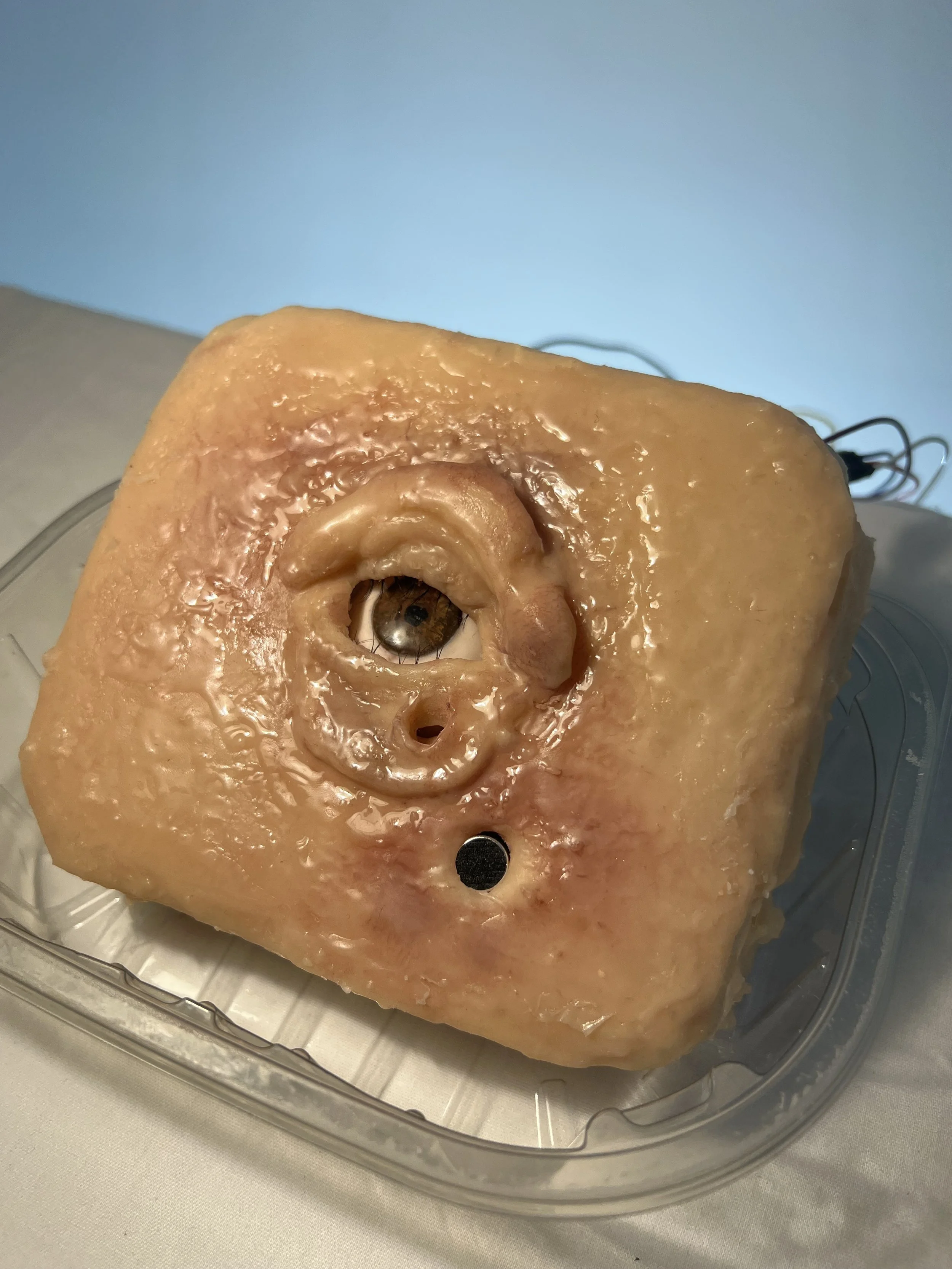The art of discomfort
Substance and resonance
OvervieW
ROLES:
Design researcher
TOOLS USED:
ARDUINO / PHOTOSHOP / PROCREATE / FIGMA / MIRO / TRADITIONAL MEDIUM
In our master thesis, my partner and I argue that beauty often emerges from the strange, the imperfect, and the unsettling. While interaction design today tends to prioritize seamlessness and comfort, we are drawn to experiences that deliberately unsettle and intrigue. Inspired by the uncanny and creepy technologies, we explore how aesthetics in design can evoke both discomfort and fascination through multisensory, affective experiences.
about
How can specific aesthetic choices be used to intentionally provoke discomfort and fascination, leading to affective experience?
Research question
Goal
Creating an affective experience that while may be unfcomfortable, also is intriguing.
the process
methodolody
ideation and concept development
Our chosen methodology, Research through Design (RtD), shaped our design process, research, and selected methods. RtD suited our project as producing prototypes and artifacts is central to our inquiry. Our process was non-linear and embraced emergence, allowing the research to evolve and guide us as it unfolded.
MOODBOARD and inspirations
We created a moodboard and gathered inspiration for both the visual expression we aimed for and the concept development, exploring themes like the uncanny valley, surveillance, and unconventional art.
Moodboard
affinity diagram
From our moodboard and inspirations, we used affinity diagram to analyze the which themes we were going to settle for.
Identifying different themes
Product of our of affinity diagram
two design ideas: eyes and embodied headset
Our analysis from our affinity diagram, led to another workshop with Crazy 8. This workshop resulted in two design ideas, of eyes and embodied headset.
Sketches from Crazy 8 workshop
thesis overview
Our project was an iterative and intergrated process of different theories, and knowledge producing through making.
Figure of our thesis overview
protoypyping I
PROTOTYPING stages
SUBSTANCE
mimicry
We engaged in a pararell prototyping of our artifacts. Following, the prototyping of Substance and Mimicry will be presented.
Prototyping stages
The eye-design was split into two artifacts. Substance being one of them, imagined as a flesh-blob with an imbedded eye. It’s core-concepts was based on biotechnology, and blend of human and technology.
Our eye designs had an animatronic eye as its foundation, with Arduino for its program.
The structure was first shaped with clay and cardboard, before being casted and covered. The flesh was made of silicone and makeup.
While, clay, makeup, resin and gel-polish was used on the 3d-printed eye.
This prototyping led to Substance!
Our second eye-design is, Mimicry. Mimicry was made for comparison to Substance, to address our initial RQ:
How do specific aesthetics and technological features influence the perception of something as unsettling?
While Substance was to intergrate human-features, Mimicry was to expose its machinery. Mimicry weeps, with a single-tear attached.
Final Mimicry!
A motor was used to pull the tear-string.


